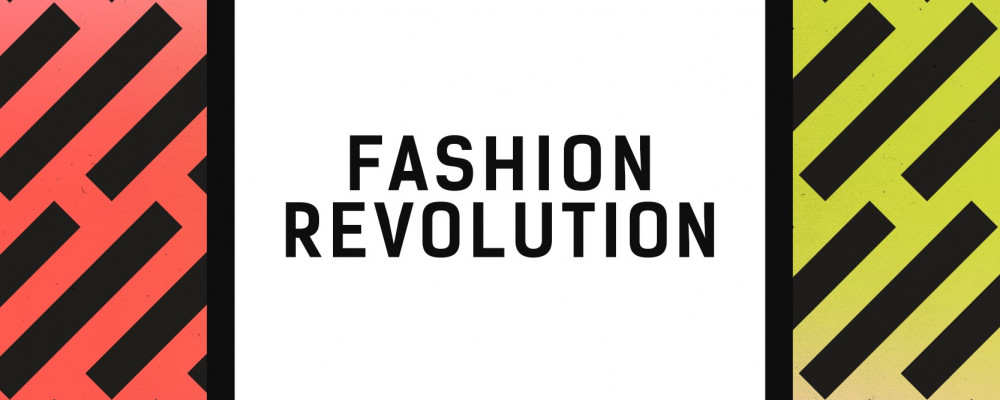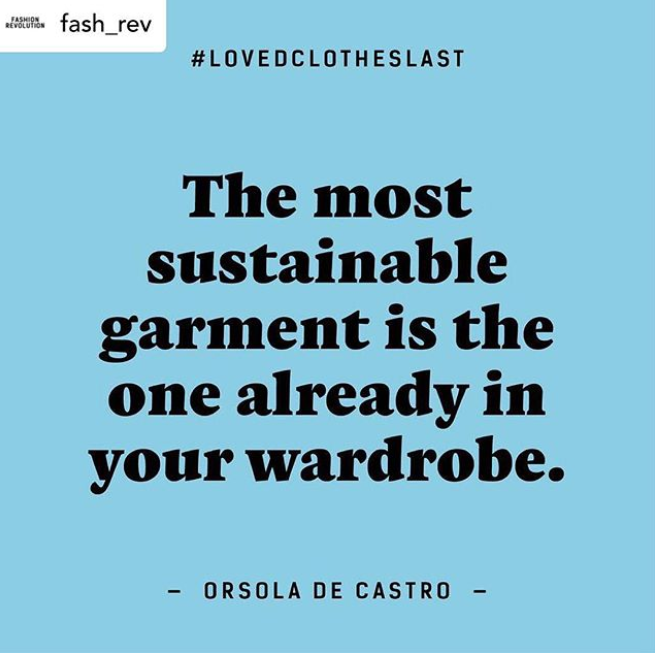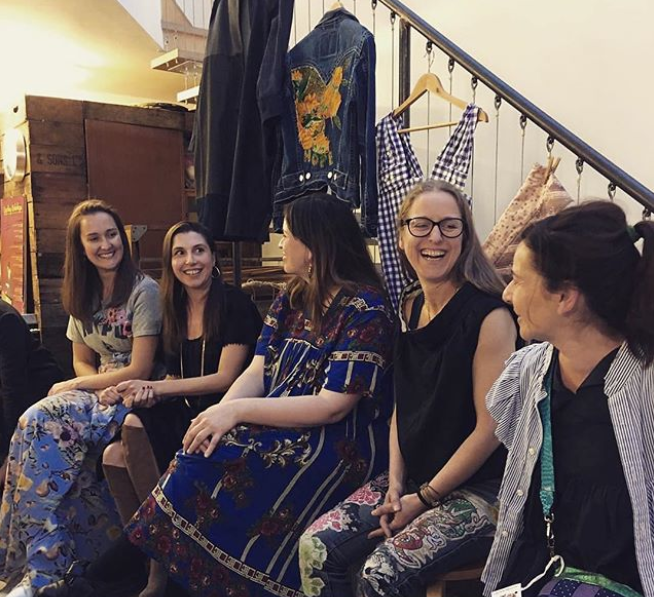
Who Made My Clothes: What we learned from Fashion Revolution Week 2019
Fashion Revolution Week takes places annually, during the week of 24 April, and is centred around the #whomademyclothes campaign. The campaign was triggered as a response to the 2013 Rana Plaza disaster, in which over 1,138 people tragically lost their lives, and many more were injured. Each year since the movement calls for brands and producers to increase transparency in their supply chain.
This global campaign is now in its sixth year, bringing together consumers and brands to tackle the fast fashion crisis through direct action. Fashion Revolution invites everyone to lead their own revolution, resulting in a packed week of events taking place simultaneously around the world. We hosted a crafting evening, "Refashion Your Wardrobe", where we invited guests to refresh old, loved garments while our fantastic panel of speakers demonstrated creative ways of upcycling, mending and repurposing. Other events included Fashion Question Time at the V&A, Fashion Open Studio, a showcase of emerging and innovative designers, and the Extinction Rebellion Circus of Excess, making headlines by bringing one of London's busiest districts to a standstill.
Reflecting on this exciting week of collaborative discussion and events around a more transparent fashion future, we're sharing our key takeaways, along with indicators of where we might be headed next.
A shift towards a ‘Make Do and Mend’ culture

Co-Founder of Fashion Revolution, Orsola de Castro’s quote (above), encouraging us to use our existing wardrobe with more consideration and imagination, was shared widely. It’s not a new approach to sustainability, but this Fashion Revolution Week, more humble habits seem to have gained ground. These range from buying second-hand - see the celebrity-endorsed vintage fashion revival, or the upsurge in more mainstream charity shop experiences - to learning techniques to liven up the clothes you own already, the topic of our panel discussion, 'Refresh Your Wardrobe'. Instead of taking a back seat, brands need to start embracing this cultural shift, changing up their business models to offer more options for extending garment life.
Our future is fashioned from waste
In the Fashion Question Time panel at the V&A, Mary Creagh, MP and Chair of the Environmental Audit Committee, highlighted that only ten significant retailers are part of the Waste and Resources Action Programme (WRAP). The program aims “to re-invent, re-think and re-define" what is possible through recycling. Supporting this, Laura Balmond, Project Manager of the Ellen MacArthur Foundation, shared: “Less than 1% of materials are going back into fashion we make”. Brands at the very least should embrace recycling, although the more cutting-edge are taking it one step further. Matthew Needham, an MA student at Central Saint Martins, mixes old stock materials from the fashion industry with other environmental waste in designs. His innovative collections draw attention to wasteful habits and point out alternative means of sourcing materials.
Only five of the biggest global fashion brands score above 60% on the Fashion Transparency Index
These were: Adidas, Patagonia, Esprit, H&M and C&A. Each year, Fashion Revolution reviews the transparency of 200 of the biggest global fashion brands and retailers. Their findings for 2019 show improvements, but as report author, Sarah Ditty says, “there is still a lot of work to be done.” No brands scored above 70%, and ten brands scored a shocking total of 0%. Fashion Revolution believes inclusion in the report encourages brands to feel accountable. It also offers constructive advice for brands to improve their transparency rating, for example, by publishing lists of manufacturers and suppliers, disclosing more environmental data and what you’re doing to reduce your footprint, and answering customers’ #WhoMadeMyClothes requests on social media.
Download and read the full report here.
Community action is needed

Fashion Revolution Week is brilliant for the way it encourages everyone to become a part of its impactful conversation. At our eco-sewing party at Fabrications in Hackney, our panel all agreed on the awesome power of simply bringing people together. Social media is excellent for reaching out to people, but being physically present is an essential factor in strengthening community spirit. There are real practical benefits found in group skill-sharing and clothes swap events. More social reasons include the sense of well-being brought on by taking part in group craft activities, or the more egalitarian format discussion takes while weaving or stitching in a group. And the more often you come together; the more conversation can evolve into action!
Accord on Fire and Building Safety in Bangladesh is under threat
Widely referred to across the week was the breakthrough safety initiative implemented following the Rana Plaza disaster, now under threat from closure on 19 May from a restraining order. Closing the accord would see the end of inspections at local factories and broader implications for industry-wide transparency. An awful twist after so many years of hard work, if the local authorities can not assume the work of the Accord, we have to look to alternative means, possibly in the form of technological innovations, to further the positive change implemented by the original agreement. There are lots of ways to show your support, find out how you can help the Bangladesh Accord here.
